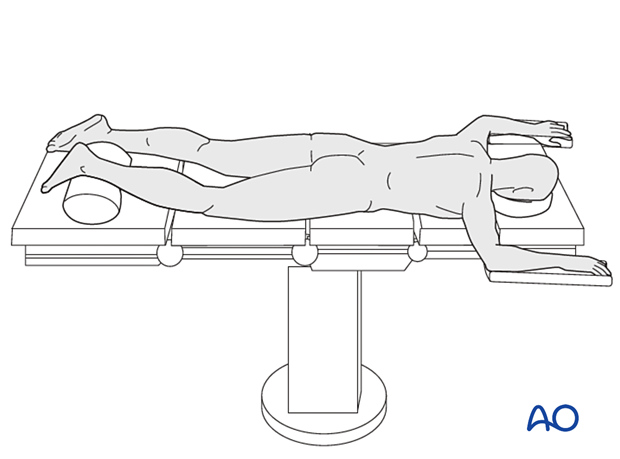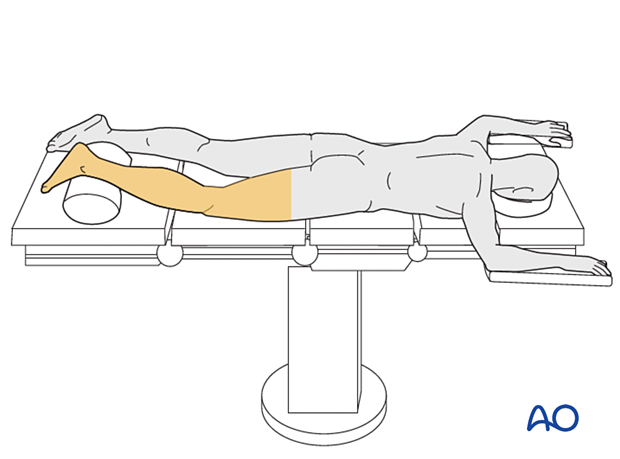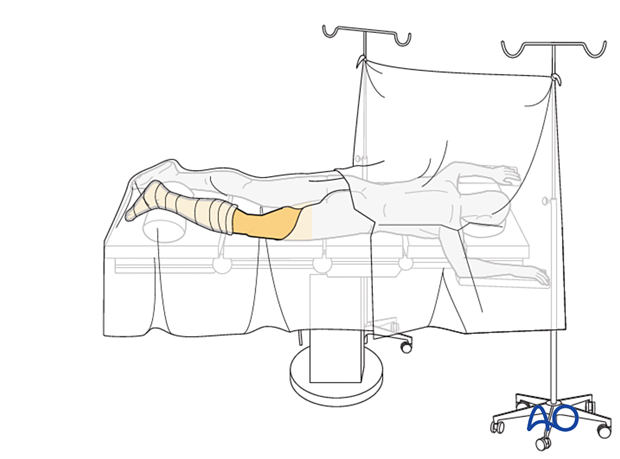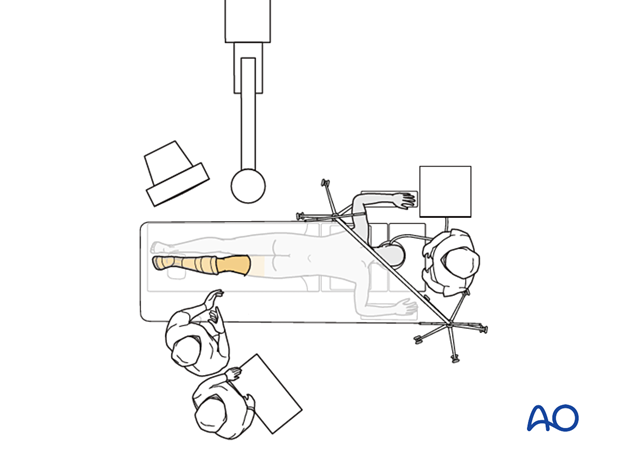Prone position
1. Introduction
The prone position provides access to the posteromedial approach.

2. Preoperative preparation
- Verify site and side of fracture with the patient along with the type of operation planned
- Ensure that the operative site has been marked by the surgeon
- Condition of the soft tissues (fracture open or closed)
- Implant to be used (note: plate comes in right and left versions)
- Patient positioning
- Details of the patient (including a signed consent form and appropriate antibiotic and thromboprophylaxis)
- Comorbidities, including allergies
3. Anesthesia
This procedure is performed with the patient under general or regional anesthesia.
If a spinal anesthetic is used, the surgeon and anesthetist need to be confident that the procedure will not last more than 1.5 hours.
4. Prophylactic antibiotics
Antibiotics are administered according to local antibiotic policy and specific patient requirements.
5. Patient and x-ray positioning
- Place the patient prone on a radiolucent operating table.
- Ensure that soft tissues, skin pressure points, and the subcutaneous nerves are well protected. Place a pad under the thigh.
- Adjust the operating table to the appropriate height and place the image intensifier on the opposite side of the injury, so that the C-arm can be swung underneath the table for lateral imaging. The normal leg interferes with fluoroscopic imaging.
- A tourniquet should always be applied to the thigh but not necessarily be inflated, depending on the surgeon’s preference.

6. Skin disinfecting and draping
Maintain light manual traction (the assistant may need to stand on a stool) on the limb during preparation to avoid excessive deformity at the fracture site.
Disinfect the whole leg from the hip including the foot with the appropriate antiseptic.

- Drape the limb with a single-use U-drape. A stockinette covers the lower leg and is fixed with tape.
- Drape the leg to allow it to be freely moved.
- Place the knee flexed to 20° with the ankle over a bump. It is important to ensure the foot is hanging free over the bump to aid the reduction of any displaced posterior fragment and to avoid excessive pressure on the toes.
- Drape the image intensifier.

7. Operating room set-up
The surgeon and ORP stand on the side of the affected limb. The assistant usually stands on the opposite side to the surgeon and moves out of the way when the image intensifier is positioned.
When needed, the image intensifier is placed on the opposite side of the injury and the display screen in full view of the surgical team and the radiographer.













